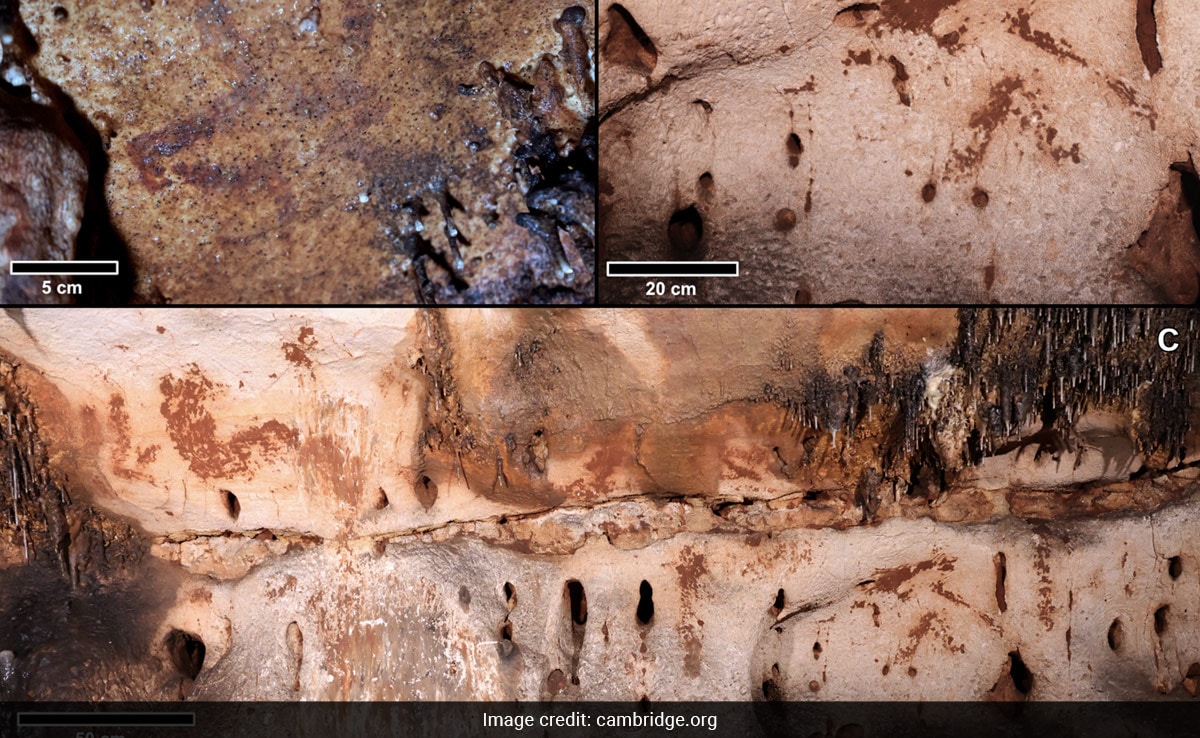
Researchers said that the site probably contains the largest number of individual designs
A team of archaeologists have discovered a Paleolithic cave art site in Spain. The site has more than a hundred individual designs. According to a study published in the journal Antiquity, the collection of prehistoric paintings and engravings is thought to be, more than 24,000 years old.
The archaeologists found the artwork in a 1,600-foot-deep cave known as “Cova Dones” -or “Cueva Dones”-located in the municipality of Millares in Spain’s eastern Valencia region, Newsweek reported.
“When we saw the first painted auroch [extinct wild bull], we immediately acknowledged it was important. Although Spain is the country with the largest number of Palaeolithic cave art sites, most of them are concentrated in northern Spain. Eastern Iberia is an area where few of these sites have been documented so far,” said Dr Aitor Ruiz-Redondo, Senior Lecturer of Prehistory at the University of Zaragoza and a research affiliate at the University of Southampton.
“The actual ‘shock’ of realizing its significance came long after the first discovery, he said.
“Once we began the proper systematic survey we realised we were facing a major cave art site, like the ones that can be found elsewhere in Cantabrian Spain, southern France or Andalusia, but that totally lack in this territory.”
The researchers said that the site probably contains the largest number of individual designs, or motifs, discovered at any Paleolithic site in Europe since the 2015 findings at the Atxurra cave in Spain’s northern Basque region.
Detailing on the animal designs, the researchers said that it includes depictions of hinds, horses, aurochs and deer. Most of the paintings were usually made using clay-a rare find at Paleolithic sites.
“Animals and signs were depicted simply by dragging the fingers and palms covered with clay on the walls,” Ruiz-Redondo said.
“The humid environment of the cave did the rest: the ‘paintings’ dried quite slowly, preventing parts of the clay from falling down rapidly, while other parts were covered by calcite layers, which preserved them until today,” he said.
The research is still in its early stages, and there is much more to explore and document within the cave.




